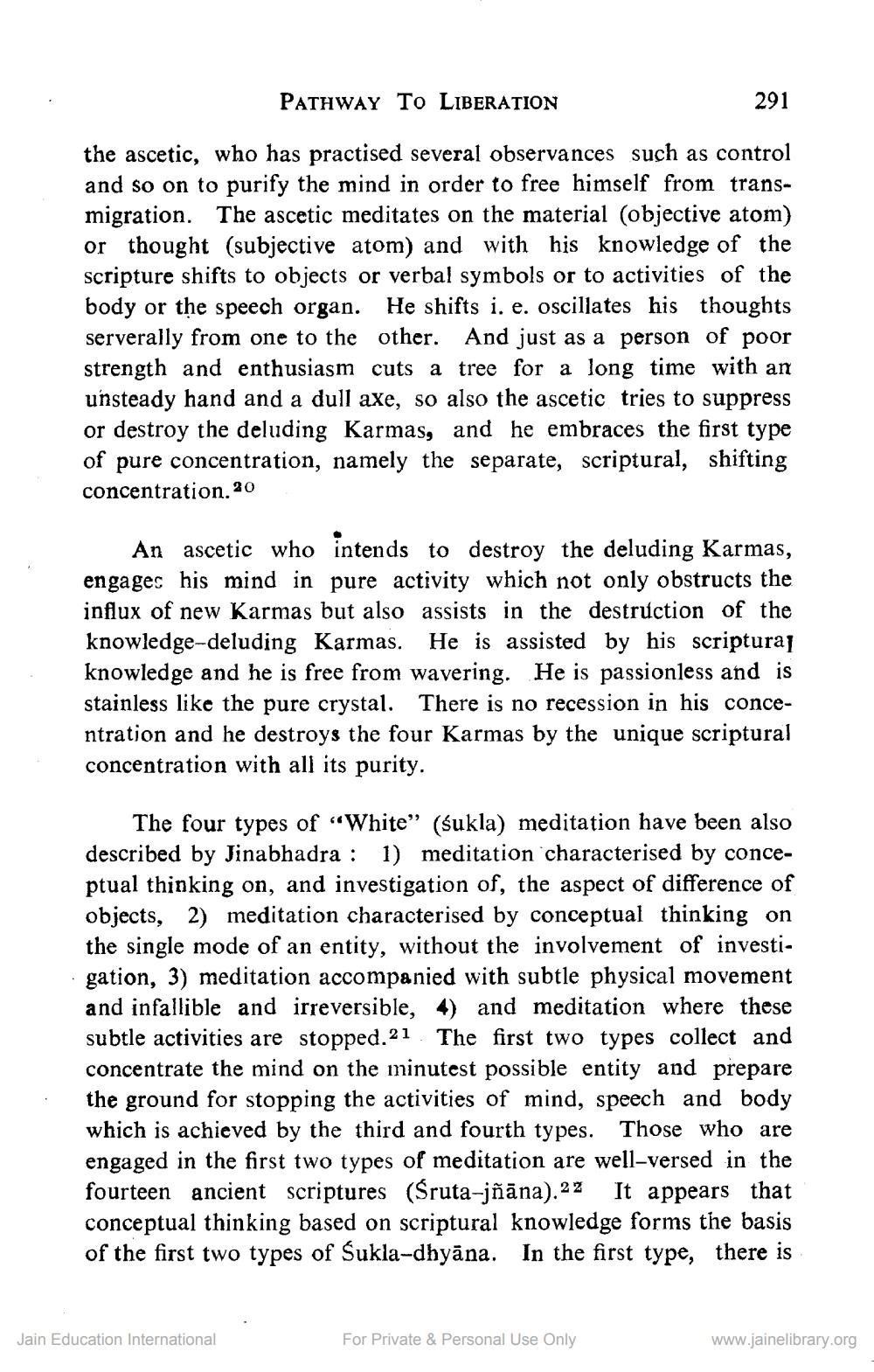________________
PATHWAY TO LIBERATION
the ascetic, who has practised several observances such as control and so on to purify the mind in order to free himself from transmigration. The ascetic meditates on the material (objective atom) or thought (subjective atom) and with his knowledge of the scripture shifts to objects or verbal symbols or to activities of the body or the speech organ. He shifts i. e. oscillates his thoughts serverally from one to the other. And just as a person of poor strength and enthusiasm cuts a tree for a long time with an unsteady hand and a dull axe, so also the ascetic tries to suppress or destroy the deluding Karmas, and he embraces the first type of pure concentration, namely the separate, scriptural, shifting concentration. 20
An ascetic who intends to destroy the deluding Karmas, engages his mind in pure activity which not only obstructs the influx of new Karmas but also assists in the destruction of the knowledge-deluding Karmas. He is assisted by his scripturaj knowledge and he is free from wavering. He is passionless and is stainless like the pure crystal. There is no recession in his concentration and he destroys the four Karmas by the unique scriptural concentration with all its purity.
291
The four types of "White" (śukla) meditation have been also described by Jinabhadra : 1) meditation characterised by conceptual thinking on, and investigation of, the aspect of difference of objects, 2) meditation characterised by conceptual thinking on the single mode of an entity, without the involvement of investigation, 3) meditation accompanied with subtle physical movement and infallible and irreversible, 4) and meditation where these subtle activities are stopped.21 The first two types collect and concentrate the mind on the minutest possible entity and prepare the ground for stopping the activities of mind, speech and body which is achieved by the third and fourth types. Those who are engaged in the first two types of meditation are well-versed in the fourteen ancient scriptures (Śruta-jñāna).22 It appears that conceptual thinking based on scriptural knowledge forms the basis of the first two types of Sukla-dhyāna. In the first type, there is
Jain Education International
For Private & Personal Use Only
www.jainelibrary.org




